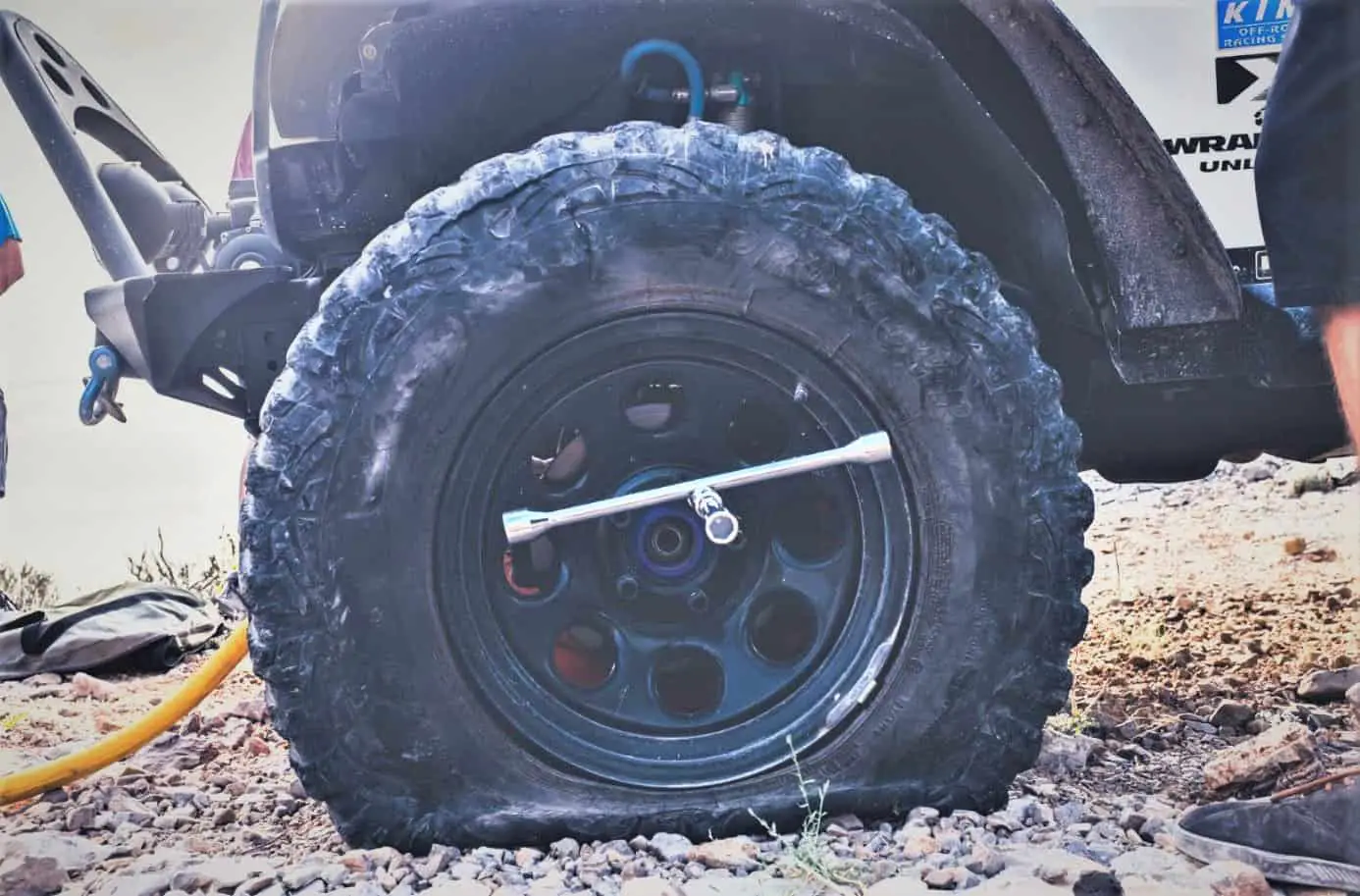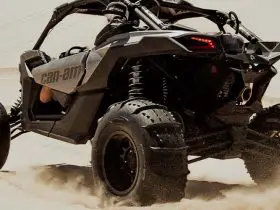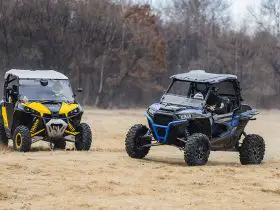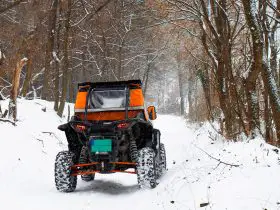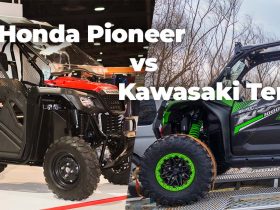A UTV, also known as a recreational or side by side, is a four-wheel-drive off-highway vehicle with a passenger capacity of two to six persons.
Pounds per square inch, PSI, are the basic units used in measuring Tire pressure in UTVs. Checking your UTV tire pressure not only extends the life of your tires but also makes the drive safer and more comfortable. The owner’s or manufacture’s manual contains the recommended tire pressure. The standard tire pressure recommended for UTVs is 12 to 18 and 4 to 8 PSI for ATVs.
Table of Contents
When and where should I use lower tire pressure?
Using low tire pressure is a good idea when looking for an exceptional grip, mainly off-road. A low-pressure tire gives you a smoother ride, absorbing all shock and sustaining no damages to the tire. The type of tire a rider has on his UTV determines the amount of pressure one can drop from the recommended tire pressure to give you the required results.
Most riders drop the tire pressure of their UTVs with about 10 PSI when rock crawling or running on dunes to give them the required additional grip. However, when reducing this tire pressure, they must run bead lock wheels to ensure your tire does not jump off by bolting it to the rim. Lower tire pressure is also recommended in hot climates since an increase in temperature causes an increase in tire pressure.
When and where to use higher pressure
Running a higher tire pressure means raising the tire pressure of your UTV above the one recommended by the manufacturer. When increasing tire pressure, you don’t require bead locks since higher pressure means that it will stick to the rims even better.
Running higher tire pressure on-road, smooth surfaces, is more convenient because there is no additional grip required. Some racers prefer using this higher tire pressure during sporting events. Lower air temperatures cause a decrease in tire pressure necessitating riders to use higher tire pressure during such climates.
Pros and cons of using a lower tire pressure
Even though tire pressure should be a significant concern, most riders overlook it. Improperly inflated tires cause difficulties in handling and performance issues. The vehicle may lean on one side, causing loss of control to the driver, who may end up causing an accident.
To avoid such incidents, one should check the tire’s pressure, especially before setting out on an off-road ride and allow time, several hours, for the tires to cool. On the other hand, lower tire pressures offer proper absorption of impacts and exceptional grips.
Pros and cons of using a higher tire pressure
Using higher tire pressure ensures that your tire is firmly attached to the rims enhancing the car’s stability, especially when navigating corners.
A stable vehicle is easy to control hence commendable, especially on road. However, in some cases, increased tire pressure may cause blowouts. It is also hard to steer the car avoiding potholes and other road irregularities, making the ride harsher.
A highly inflated tire does not absorb impacts hence mostly used for smooth road surfaces.
Comparison of tire pressure in ATVs, UTVs, Enduro and Pickup trucks
Various off-road vehicles have varying recommended tire pressures. The recommended terrain defines the average tire pressure sustainable by an off-road vehicle under normal conditions.
A car with a high load carrying capacity requires a higher tire pressure. Therefore, pickups have the highest tire pressure ranging from thirty to thirty-five PSI.
For Enduro trucks, the recommended tire pressure ranges from fifteen to sixteen PSI. Enduro riding does not allow lower pressure due to the temperature rise caused by increasing speeds at road surfaces.
The range of tire pressure for an ATV on average terrain is five to six PSI. Different vehicles use different tires such as Dotty approved knobby tires, which are a major influencing factor in the recommended tire pressure.
Riders should stop ignoring tire pressure by checking their tire pressures before making any rive, regardless of whether it is off-road or on-road. They are maintaining the right tire pressure dramatically influences the level of safety and comfortability of a vehicle.
Checking tire pressure also prevents rapid wearing off tires and enhances better economization of fuel. Factors such as climate, tire type, and loading capacity are the major determinants of a car’s recommended tire pressure.

